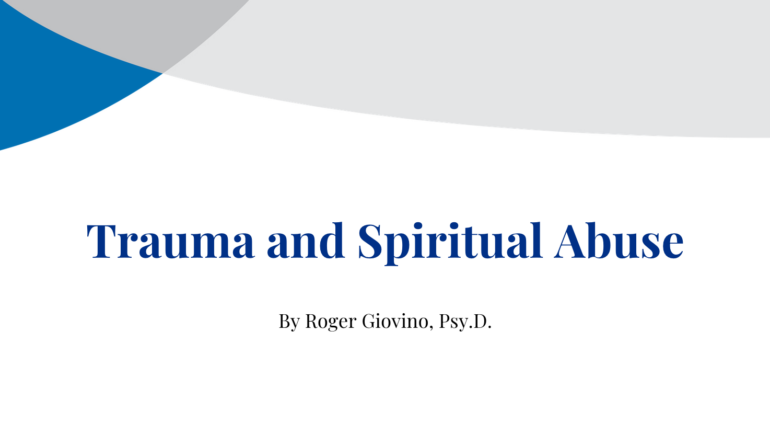As a trauma psychologist, I have the privilege of working with individuals who have experienced significant negative life events.
The exposure to trauma tends to be common. For instance, some studies suggest that around 89.7% of individuals will likely experience some form of trauma during their life. That does not necessarily mean that all those individuals will develop post-traumatic stress disorder (PTSD) or have significant lasting effects. Rates of PTSD tend to be around 6.8 % of the U.S. general population. The link between trauma exposure and PTSD may also be misleading due to how PTSD is categorized in the “Diagnostic and Statistical Manual of Mental Disorders, 5th Edition” (DSM-5-TR). According to the DSM-5-TR, trauma relates to the actual, threatened, or witnessed exposure to death or serious injury of a person. With that said, the DSM-5-TR does not consider the broader spectrum of trauma, which is problematic.
Trauma can be broken down into “Big T” and “little t” trauma. “Big T” trauma refers to life-threatening situations, while “little t” trauma could be any event that causes distress or fear. Examples of “little t” trauma include breakups, childhood verbal abuse, bullying, microaggressions, or emotional abuse. The impact of trauma can be long-lasting and can affect many aspects of a person’s life, including emotions, relationships, and memory.
One topic that has been increasingly coming up in my work is the experience of spiritual abuse. Interestingly, there is not much data regarding the experience of spiritual abuse which is fascinating due to the percentage of individuals who identify as being religious or spiritual.
According to 35,000 participants of the religious landscape survey conducted in 2007 and 2014, roughly 70.6% identified as Christian, 5.5% as being members of non-Christian faiths, and 22.8% as being unaffiliated with a particular religion. Moreover, 79% of the participants reported that their faith is very important to them and at least 69% reported attending religious services regularly. Based on this data, it can be assumed there is a large portion of individuals within the United States who have some religious or spiritual affiliation.
It is important to acknowledge the potential overlap between religious or spiritual identification and experiences of trauma, as data suggests that a significant portion of the population may have experienced religious trauma. Conservative estimates suggest that between 27% and 33% of U.S. adults have experienced such trauma, but it is possible that this range underestimates the true prevalence. Given the potential frequency of this experience, it is important to have a conversation about what spiritual abuse entails.
Spiritual abuse refers to the use of spiritual or religious beliefs to manipulate or control others. This can involve using scripture to justify abusive behavior, enforcing strict rules and regulations, or pressuring individuals to conform to a particular set of beliefs. Victims of spiritual abuse may experience feelings of guilt, shame, and isolation and may struggle to trust religious or spiritual communities in the future. Anyone can be a perpetrator of spiritual abuse; however, for the purpose of his conversation let’s look at some of the warning signs within an institutional level.
One warning sign is power positioning, in which leaders emphasize their authority and remind members of everything they have done for them, creating a sense of obligation. This can put the leader in a position of power over the members. Performance preoccupation is another warning sign, where followers obey orders to avoid being shamed, gain approval, or keep their position in the church. The “cannot talk” rule suggests that disagreeing openly or publicly makes you the problem and could result in being shunned or asked to leave the church. Out-loud shaming, such as name-calling and belittling, is also a red flag for possible spiritual abuse. Scare tactics involve statements such as “God will withdraw his love” if you “sin” against the church or do not obey the rules of the church.
Spiritual abuse can result in a range of impacts on individuals. Among the common effects are self-blame, a propensity for self-punishment, a challenge in accepting grace, distorted perceptions of God, difficulty setting boundaries, an inability to say no, a negative self-image, and shaming others. These effects can have significant consequences for the individual’s mental and emotional well-being, as well as their social and interpersonal relationships.
For individuals who have experienced spiritual abuse it is important to seek professional support and resources to aid in coping with these impacts and working toward healing.

